2021 Kia Seltos First Drive - Its Venue Is Kona

We all know what happens to you and me when we assume, and a lot of folks will assume the 2021 Kia Seltos shares its bones with the also-new Hyundai Venue.
I know I did, and when I questioned Hyundai to fact-check myself, I didn’t get a clear answer (as the two companies tend to silo their information from one another).
The assumption that the Seltos is just a re-boxed Venue is wrong. The Seltos, despite playing in the same class as the Venue and being similar in size, is actually based on a different Hyundai – the Kona.
Yes, the Kona that I mostly like (in top-trim form) and Bark ripped (in lower trim) to shreds. The same Kona that Chris also dinged for pricing problems.
Not that you’d know it from looking at it. The Seltos has a busier, more futuristic look than the Kona, although it doesn’t have the latter’s odd headlight placement. Like the Venue, it offers two-tone styling, and at first glance it looks more like the boxy Venue than the wedge-shaped Kona.
Hence, the assumptions.
(Full disclosure: Kia flew me to San Antonio, Texas, fed me, housed me, and asked me to participate in Texas-themed games after dinner. I did not take home any gifts, save a notebook and pen. I did submit a chili recipe — the winners would be served for dinner — and did not win).
Like with the Kona, there are two engines on offer: A 2.0-liter naturally aspirated four-cylinder engine making 146 horsepower and 132 lb-ft of torque that pairs with an “intelligent” continuously-variable automatic transmission, and a 1.6-liter turbocharged four-cylinder that makes 175 horsepower and 195 lb-ft of torque and pairs to a seven-speed, dual-clutch automatic transmission.
[Get Kia Seltos pricing here!]
Seltos bases with front-wheel drive, but all-wheel drive is available on all trims. The AWD system has a locking center differential.
For this drive, Kia only had one engine on hand – the 1.6 in the top-trim SX guise. The 1.6L offers a kick in the spurs that registers as a pleasant surprise. Blazing fast it ain’t, but there’s enough juice on tap for easy maneuvering around the big rigs that clog the interstates outside San Antonio. Even with the AWD system, the Seltos gets moving with little effort.
Unfortunately, the seven-speed is a bit brusque in operation.
To the extent that crossover buyers give a whit about steering feel, it’s not bad – artificial, sure, but with a pleasant heft and nice accuracy. A Sport mode livens things up by adding weight to the steering and response to the throttle, keeping the engine in the prime part of the rev band, but we’re still talking about a compact city car here. It’s mildly more fun in Sport, but save your racer fantasies for that Miata you keep saying you’ll buy (but never do).
Ride is stiff but smoother than Kona, although the roads deep in the heart of Texas aren’t terribly rough. The few coarse surfaces I did encounter brought forth a bit of tire noise, and rainy/windy weather exposed some wind noise from the A-pillar at highway speeds.
Cabin materials are a bit nicer on the SX than the rest of Seltos, and they’re class-competitive. The infotainment system is officially Kia’s UVO but it’s pretty close to what’s on offer in Hyundai’s new Sonata, including the available nature sounds. The menus offer the same user experience. An available wireless cell phone charger is a nice feature, and Apple CarPlay and Android Auto are standard.
Rear-seat room behind a tall adult will be tight, should said adult put the seat all the way back. There’s under-floor storage in the cargo area, which measures out to 26.6 cubic feet with the rear seats up and 62.8 with the rear seats folded.
The exterior design is a bit strange, but it ends up being sleeker in person than you’d expect. Almost handsome, even. A bit boxy, sure, and if one accused the lighting areas, especially out back, of being a bit too busy, I’d not argue. Still, there’s just enough curvature (especially the scooped doors) here to keep things interesting, and the overall look is cohesive – arguably more so than Kona.
Kia took us to an “off-road” course that amounted to little more than a farm road, so I can say the Seltos handles your standard gravel/dirt road just fine. There are skid plates, but don’t be fooled by them or the Kia marketing machine — light off-roading is probably all you can really do.
The overall experience is pleasant, yet unremarkable. The Seltos feels screwed together well, and it’s not a snooze to drive. Yet, it’s not so memorable as to be a class standout.
There are five trims available: LX, EX, S 2.0L, S 1.6T, and SX. Standard features include Bluetooth, Apple CarPlay, USB port, Android Auto and 17-inch wheels. Available features include a 10.25-inch touchscreen for infotainment, satellite radio, navigation, up to three USB ports, wireless cell-phone charging, premium audio, blind-spot collision warning, blind-spot collision avoidance-assist, driver-attention warning, highway-driving assist, forward collision-avoidance assist, lane-departure warning system, lane-keeping assist system, lane-following assist, rear cross-traffic collision avoidance assist, rear occupant alert, smart cruise control with stop and go, and safe exit assist.
Base price is $21,990 before D and D, and the loaded SX I drove added two-tone paint ($345) and carpeted floor mats ($130) for a final price of $28,365, including the $1,120 destination fee.
Seltos plays in a crowded class. It’s not only set to compete with its sibling, the Kona, but also against the Venue, the Chevrolet Trailblazer, Ford’s EcoSport, Nissan’s Kicks, Honda’s HR-V, Jeep Renegade, Kia’s Soul hatchback, the Mazda CX-3 and CX-30, the Mitsubishi Outlander, and Toyota C-HR, among others.
Looking at that list, the Seltos places somewhere in the upper tier. It’s a nicely-done crossover that won’t shake up the market, and unlike cynical exercises like the EcoSport, it’s well thought out.
Seltos is a solid effort that will be class-competitive. That assumption, I think, is safe.
[Images © 2020 Tim Healey/The Truth About Cars]

Tim Healey grew up around the auto-parts business and has always had a love for cars — his parents joke his first word was “‘Vette”. Despite this, he wanted to pursue a career in sports writing but he ended up falling semi-accidentally into the automotive-journalism industry, first at Consumer Guide Automotive and later at Web2Carz.com. He also worked as an industry analyst at Mintel Group and freelanced for About.com, CarFax, Vehix.com, High Gear Media, Torque News, FutureCar.com, Cars.com, among others, and of course Vertical Scope sites such as AutoGuide.com, Off-Road.com, and HybridCars.com. He’s an urbanite and as such, doesn’t need a daily driver, but if he had one, it would be compact, sporty, and have a manual transmission.
More by Tim Healey
Latest Car Reviews
Read moreLatest Product Reviews
Read moreRecent Comments
- Justin You guys still looking for that sportbak? I just saw one on the Facebook marketplace in Arizona
- 28-Cars-Later I cannot remember what happens now, but there are whiteblocks in this period which develop a "tick" like sound which indicates they are toast (maybe head gasket?). Ten or so years ago I looked at an '03 or '04 S60 (I forget why) and I brought my Volvo indy along to tell me if it was worth my time - it ticked and that's when I learned this. This XC90 is probably worth about $300 as it sits, not kidding, and it will cost you conservatively $2500 for an engine swap (all the ones I see on car-part.com have north of 130K miles starting at $1,100 and that's not including freight to a shop, shop labor, other internals to do such as timing belt while engine out etc).
- AZFelix Let's forego all of this dilly-dallying with autonomous cars and cut right to the chase and the only real solution.
- Zelgadis Elantra NLine in Lava Orange. I will never buy a dirty dishwater car again. I need color in my life.
- Slavuta CX5 hands down. Only trunk space, where RAV4 is better.





















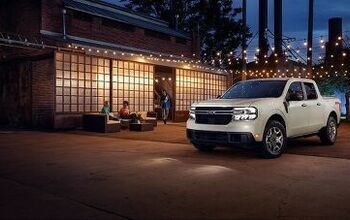
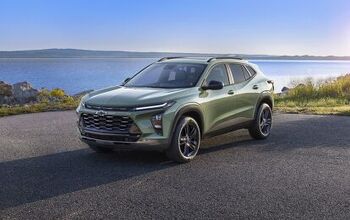

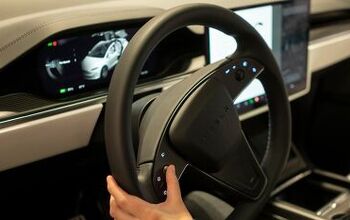
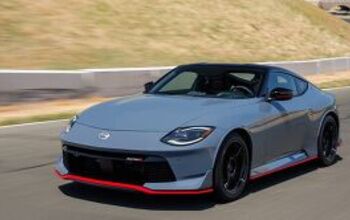
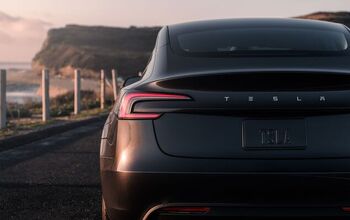
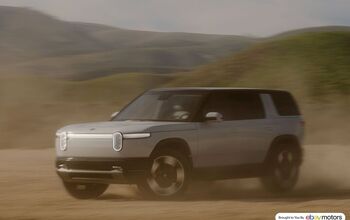
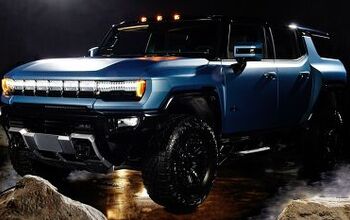
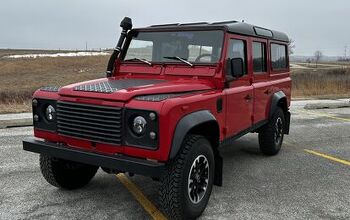




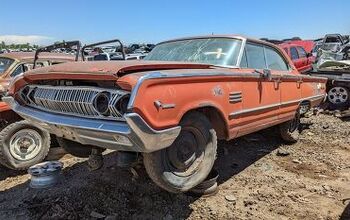

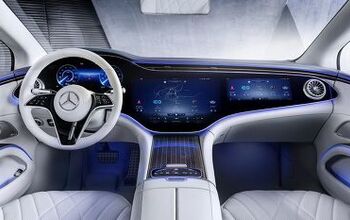
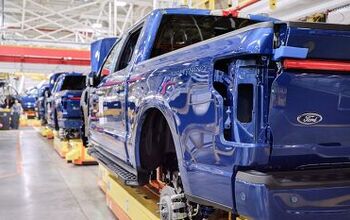
Comments
Join the conversation
If it's basically a Kona rebody, this thing is SMALL. We're talking no-joke small, Chevy Trax small. They've done a commendable job taking the most awkward CUV size, the hi-top sneaker subcompact, and somehow making it look like a normal compact CUV -- with, dare I say, one of the more handsome and sophisticated rear views of a CUV of any size. Applause. But this thing is selling for about $28.5 in top trim? Dude, that is a LOT of money for something this size. Sounds like it's the best-driving thing in its class, if you pony up for the torquey turbo and quick-shifting DCT, but...yikes, getting top dollar for a small Kia might be a stretch. Especially when H/K hasn't earned the best rep for its turbo engines (performing under rated HP due to improper assembly) or DCTs (I had one, don't ask).
The KIA awd w locking diffs is pretty good - I've driven a sportage in fairly tough conditions with no problems. Don't know if this has it, but hill decent works well too.